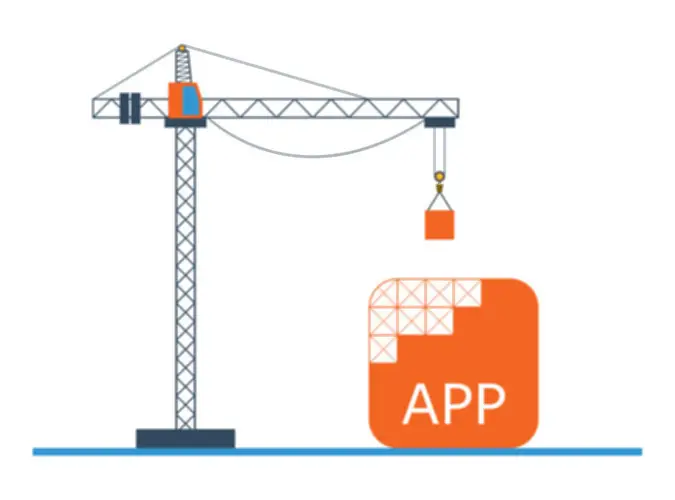As talked about before some forms of workloads demand more computational assets which may be greatest solved by scaling up. Some may need extra storage or more network I/O which can be addressed by scaling out. It means the ability of a system to self-adjust the load based mostly on the demand and likewise scalability and elasticity in cloud computing self-adjust the amount of resources consumed within the system and is an element of scalability and automatic useful resource scaling of software architecture.
Past The Server: A Deep Dive Into The Cloud Computing Market
Hardness is a measure of a material’s capability to withstand plastic deformation or a material’s resistance to penetration by a pointed device. This is a crucial characteristic to think about in applications with two materials impacting one another — the more durable one will scratch or trigger overfitting in ml plastic deformation on the other material. Hardness depends upon ductility, plasticity, strain, strength, toughness, viscosity, and viscoelasticity.
Constructing The Proper Team For Generative Ai Success: Key Roles And Abilities
Conversely, elasticity refers back to the system’s capacity to handle elevated workload with the assistance of computerized scaling of assets. In cloud infrastructure, it implies that the software program design can adapt to the modifications in usage patterns while not having an administrator’s input. In conclusion, understanding elasticity in cloud computing is essential for building resilient, scalable, and cost-effective functions and companies. By leveraging elasticity successfully in cloud environments, organizations can optimize useful resource utilization, improve efficiency, and respond swiftly to evolving enterprise necessities. Elasticity in cloud computing refers back to the system’s capability to automatically adapt to altering workloads by dynamically provisioning and de-provisioning sources in real time.
Instance: Aws’ Elastic Beanstalk

For example, firms can add new providers, customers, and clients without worrying about the further computing sources they’ll want. Common use instances where cloud elasticity works nicely include e-commerce and retail, SaaS, cell, DevOps, and other environments which have ever altering demands on infrastructure companies. Some of the real time examples for your system to be Elasticity ready are retail companies gross sales like Christmas, Black Friday, Cyber Monday, or Valentine’s day. It’s been ten years after NIST clarified the distinction between Elasticity vs. Scalability. But the definition of scalability and elasticity in cloud computing just isn’t full with out understanding the clear connection between both these phrases. ● Horizontal scaling — This is what is typically known as scaling in or out.
Constructing Cloud Computing Platforms Made Really Easy You Are Capable Of Do It In A Couple Of Hours
Doing so gives you an concept of the stiffness or power you want for those elements. It’s also a good suggestion to develop graphical representations of complex dynamical systems utilizing bond graph or block-diagram modeling and make the most of software to model sophisticated techniques. If a cloth is stiff, then it should be strong sufficient to support a big load, right? These applied sciences are gearing up to play detective, analyzing patterns of workload like seasoned investigators, forecasting demands and tweaking resources on the fly to ensure every little thing runs as easily as silk. Choosing scalability for your business prepares you for growth and ensures each step ahead is as clean and environment friendly as attainable. It foresees those moments when your operations have to broaden and have the instruments able to make that transition seamless.
In this journey of planned progress, the place every new buyer, project, or data byte might push your methods to their limits, a robust technique is crucial. Evolve IP’s digital workspaces have allowed us to amass extra practices in a sooner and extra worthwhile method. That is leading to bottom-line cost financial savings and top-line enterprise benefits.” As an autonomous, full-service growth firm, The App Solutions makes a speciality of crafting distinctive products that align with the specificobjectives and rules of startup and tech companies.

Before delving into their impact on these two basic characteristics of cloud computing – elastic scaling and scalability – it’s necessary to know what containers are. Think of them as lightweight packages that maintain your application code together with all its dependencies. This makes transport out functions throughout various platforms seamless- a vital quality when discussing cloud scaling and elasticity. Containers, typically used synonymously with Dockers, have revolutionized the sphere of cloud computing. Primarily, they offer a transportable, constant environment for developing, testing, and deploying software program applications; but past this fundamental premise, they play a pivotal role in attaining elasticity and scalability within the cloud. Moreover, the mixing of AI/ML into cloud providers helps improve efficiency whereas reducing operational prices.
Elasticity in cloud computing refers brackets ideas similar to ‘elastic scaling’ and ‘rapid elasticity’, which I will delve into shortly. At its core, it nominates an infrastructure as a service paradigm where IT sources are precisely allotted in accordance with real-time wants. This adaptability creates a dynamic surroundings able to efficiently sustaining service quality despite rapid and unpredictable changes in workloads. Scalability is very related to elasticity however it’s on a more everlasting, much less makeshift type scale.
Keep in mind that with vertical scaling, your efficiency could also be affected, as the server’s measurement and capability limit the whole amount of growth. It is due to this fact necessary to know how to stability scalability and elasticity when working on workload in cloud infrastructure. Scaling up or out ensures that the required sources to meet the rising complexity of software program architecture can be found and may be introduced in to meet the complexity of the system. On the opposite hand, elasticity permits for the auto-scaling of resources, that means that the infrastructure can be modified according to real-time needs. The decision of whether or not to go up (vertical scalability) or out (horizontal scalability) in a cloud infrastructure depends on the following. One is the sort of work that the system is required to perform on the info which is to be processed.
- In cloud infrastructure, it means that the software program design can adapt to the modifications in usage patterns without needing an administrator’s input.
- Certifications in cloud computing may help clearly define who’s qualified to support an organization’s cloud necessities.
- These are the 2 cornerstones which have the ability to create or break the efficiency and affordability of a cloud-based system; they’re extra than simply catchphrases.
- Knowing the difference between scalability and elasticity helps you make smart choices about your cloud computing wants.
Scalability is the flexibility of a system, network, or course of to deal with a growing amount of labor or its potential to be enlarged in various ways. A scalable answer can get scaled up by including processing power, storage capability, and bandwidth. Cloud elasticity refers to the capability to scale Computing Resources in the cloud up or down based mostly on precise demand. This capability to adapt to increased utilization (or decreased usage) permits you to provide resources when needed and keep away from prices if they aren’t. Intelligent elasticity techniques will regulate assets based mostly on demand and analyze historical knowledge, tendencies, and person habits to predict future spikes and adapt accordingly.
It’s an essential measure when considering the wear resistance (abrasion or erosion resistance of a part) since tougher supplies sometimes have greater wear resistance. AWS auto-scaling is a characteristic of AWS that lets you scale your EC2 instances based mostly on a sequence of triggers -automatically. Auto-scaling is straightforward to set up, however there are some issues to recollect when using it. This can be especially useful when you have an software that requires plenty of assets at peak occasions and less throughout off-peak hours. You cannot predict how much demand they will obtain, so it’s best to scale up and down quickly as wanted.

It’s also critical to assume about design for manufacturability (DFM) when optimizing a design prior to manufacturing. Even the most intelligent designs will fail in the event that they don’t account for the constraints of manufacturing strategies. That’s why Fictiv provides prompt DFM suggestions for each design that’s uploaded to our platform. Design optimization and verification must be performed prior to prototyping a design, and CAD software program can assess and optimize the geometry of your design.
Vertical scalability means increasing the capability of the present hardware or software program assets, for instance, including more memory to the server or a robust CPU. Financial providers require scalability for stable workloads but require extra sources for end-of-month or end-of-year processing. Healthcare systems may experience predictable will increase in demand throughout sure times, whereas elasticity ensures assets are automatically scaled to meet increased workloads during emergencies. Increases in knowledge sources, consumer requests and concurrency, and complexity of analytics demand cloud elasticity, and also require a knowledge analytics platform that’s just as capable of flexibility. Before blindly scaling out cloud sources, which increases cost, you should use Teradata Vantage for dynamic workload administration to make sure important requests get critical sources to meet demand.
Scalability refers again to the capability of a system, network, or process to handle an growing quantity of labor or load by adding assets. Scalability is usually used to explain the ability of a system to handle rising quantities of work or traffic in a predictable and controlled manner. In a scalable system, the system can be made bigger or smaller as wanted to fulfill the changing demands of the workload. Cloud environments (AWS, Azure, Google Cloud, and so on.) provide elasticity and a few of their core providers are also scalable out of the field. All of the trendy major public cloud suppliers, together with AWS, Google Cloud, and Microsoft Azure, supply elasticity as a key value proposition of their services. Typically, it’s something that occurs mechanically and in real time, so it is usually known as rapid elasticity.
In the National Institute of Standards and Technology (NIST) formal definition of cloud computing, speedy elasticity is cited as an important component of any cloud. Beyond that, serverless computing fosters operational agility by including sources and allowing developers to focus extra on core enterprise functionalities rather than being encumbered with infrastructure management points. This elevated velocity can lead in course of faster iterations and an total enchancment in enterprise adaptability—characteristics inherent in scalable systems.
Transform Your Business With AI Software Development Solutions https://www.globalcloudteam.com/ — be successful, be the first!

